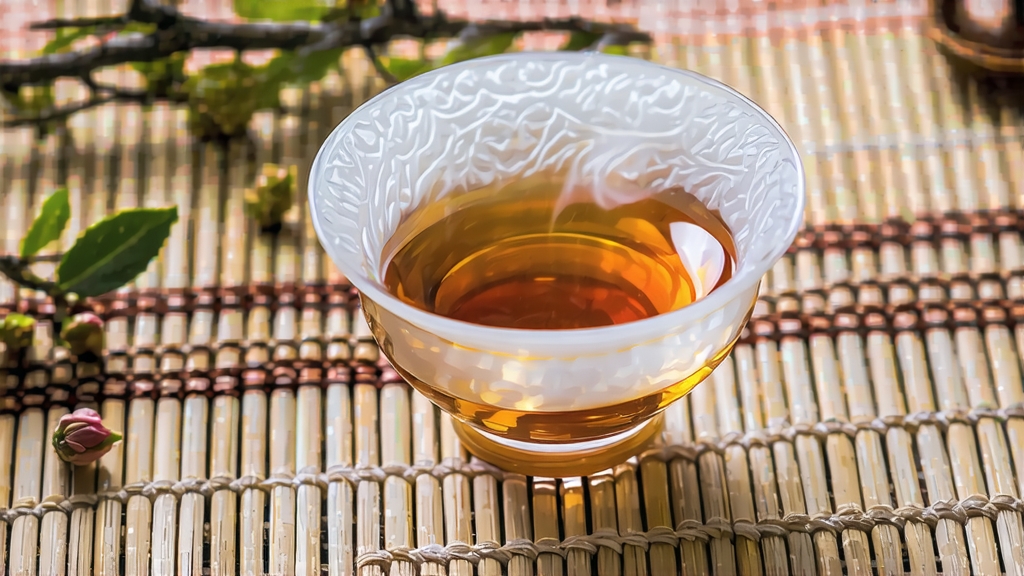
Among the six great families of Chinese tea, white tea is the least theatrical yet the most haunting: it is simply picked and dried, allowing leaf and time to finish the story. Within this minimalist lineage, Bai Hao Yin Zhen—translated abroad as “White Hair Silver Needle”—stands as the purest expression of the art. Composed solely of unopened buds plucked during the first warm breath of spring, it is the princeling of white teas, priced higher than gold by weight and cherished by collectors who speak of vintages the way oenophiles murmur about Bordeaux. To international drinkers accustomed to rolled oolongs or smoked Lapsang, Silver Needle can feel almost too delicate—until its quiet layers unfurl across the palate like ink on wet rice paper, revealing a depth that louder teas can only imitate.
History: from imperial elixir to global muse
The written record begins in the Song dynasty (960-1279), when the Fujian court sent “silver tribute tea” northward on mule caravans; the buds, still tiny, were mixed with spices and pressed into cakes so they could survive the journey. By the late Ming (17th century) the loose-leaf fashion took hold, and the now-famous buds of northern Fujian—Dai Bai, Xiao Bai, and later the larger Fuding Da Hao cultivar—were simply withered and baked, a technique that required neither the charcoal drama of Wuyi rock teas nor the laborious rolling of green tea. Foreign merchants first encountered Silver Needle in the treaty-port era; European medical journals of 1880 praised its “light stimulative virtue” and apothecaries sold it as a fever remedy. In the 21st century the tea has become a darling of specialty cafés from Melbourne to Montreal, where baristas tout its low caffeine myth (it is actually moderate) and sommeliers pair it with raw seafood for its marine-sweet finish.
Terroir: why Fuding and Zhenghe taste like different poems
Authentic Silver Needle comes only from coastal Fujian: Fuding county, with its granitic soils and maritime fogs, yields buds that are plumper, downier, and higher in polyphenols, giving a creamy, orchid-like liquor. Thirty kilometres inland, Zhenghe sits 200 m higher; cooler nights slow transpiration, concentrating amino acids and creating a thinner, more citric cup with a hint of white peach. Purists can distinguish the two by the bud silhouette: Fuding’s resemble tiny spears with a slight hook, while Zhenghe’s are straighter and dusted with a paler pubescence. Beyond these two counties, any “silver needle” from Yunnan, Guizhou or even Sri Lanka is a stylistic imitation, usually made from different cultivars that lack the signature down and maritime minerality.
Plucking: the dawn raid on the tea garden
The picking window is brutally short—about ten days in late March when the ambient humidity hovers between 75 % and 85 % and the buds reach 2.5–3 cm without yet unfurling into leaves. Experienced pluckers use a snap-twist motion that removes the bud but leaves the mother leaf intact, ensuring next week’s growth. A top worker gathers barely one kilogram of fresh buds per day; five kilos are needed to yield a single kilo of finished tea. The buds must never touch the ground: they are laid into shallow bamboo baskets lined with hemp cloth, then rushed to the withering loft before the sun climbs high enough to oxidise them into something darker than white.
Craft: the art of doing almost nothing
White tea’s minimalism is deceptive; the processor is actually steering invisible reactions. The traditional method spreads the buds in single layers on bamboo trays set in a sun-warmed loft; for 36–48 hours they rest while enzymatic oxidation proceeds at glacial speed, turning grassy aldehydes into honey-lactones and producing the characteristic silver-white pubescence that refracts light like frost. Every two hours the tea master shuffles the trays, judging moisture by the coolness of the buds against his cheek. If rain threatens, charcoal ovens burning local longan wood maintain 28–30 °C, but the smoke must never touch the leaf—only its radiant heat. A final 15-minute “foot-fire” at 40 °C locks in 8–9